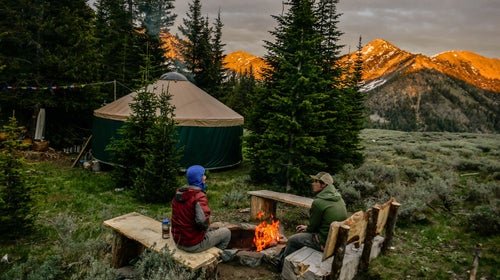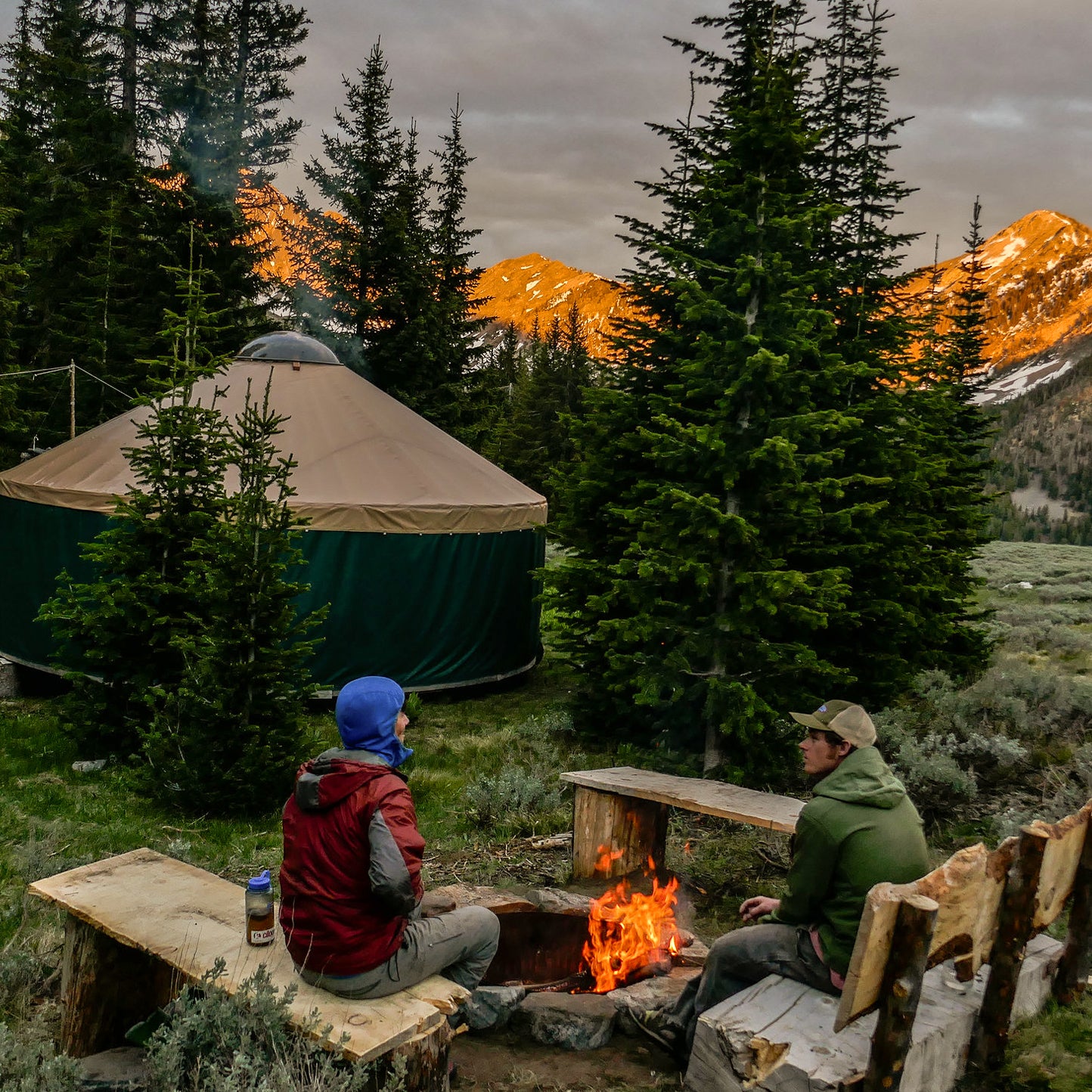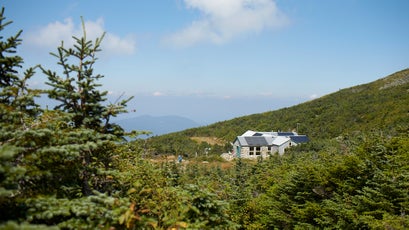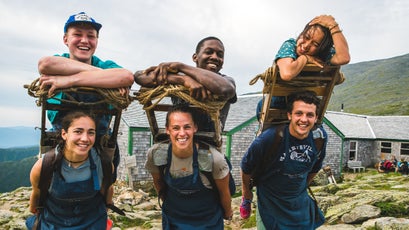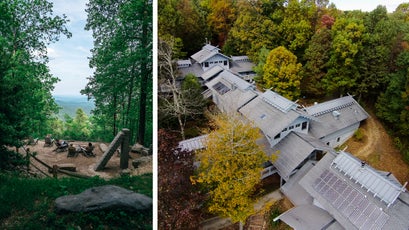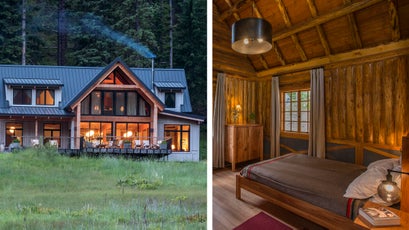Europe is known for its network��of high-alpine huts, where you hike from lodge to lodge and eat dishes like goulash and spaetzle before retiring for the night in plush accommodations and��then hiking on��to the next hut the following day. But you don’t have to leave the country��for a taste of that experience.��
“The U.S. is on the verge of embracing what huts are all about,” says Sam Demas, author of the forthcoming guidebook��,��which will be published in October. “There’s a big appetite for hut travel in the U.S., and we’re seeing more communities develop new systems.”
Demas, a self-described hut nut who runs the website��, estimates that there are well over a dozen such��systems across the country, with hundreds of lodges, yurts, and backcountry huts you can hike to from Maine to Oregon. And more are on the way. The Alaska Huts Association plans to break ground in 2023 on a�� in��the��Kenai Mountains, the Vermont Hut Association has a long-term�� across the state, and Colorado’s Grand Huts Association hopes to one day connect nine huts from Berthoud Pass, near the ski resort of Winter Park, to Grand Lake.
To search for huts near you, check out��, a comprehensive resource with��all of��the backcountry cabins, lookouts, and lean-tos in North America. You can filter by shelter type, available services, capacity, access, and more. Some of these��destinations, like in Montana’s Glacier National Park or the�� in California’s Yosemite National Park, book out as soon as reservations are released. Others, like the�� on U.S. Forest Service land, are often first��come, first served��or infrequently reserved.
Amenities differ wildly—you’ll get chef-made meals and luxury accommodations at the�� in Colorado, compared with��a rustic hut without electricity or running water at the�� in New Hampshire. “Most huts come well stocked with things like firewood, mattresses, cookware, stoves,” says Kendra Cobourn, founder of��, an outfit that plans custom backpacking, hiking, and camping trips across the continent. If your pick is��a more bare-bones operation, make sure you��follow��protocols on food storage and waste disposal, including Leave No Trace practices.
Here’s an overview of some of the best out-of-the-way American huts and lodges you can visit in the summer and what you’ll find once you get there.
If You’re Looking for a Traditional Alpine-Hut Experience
The Appalachian Mountain Club operates America’s oldest hut system, with its��first property—the�� in New Hampshire—dating back to 1888. Today the��AMC runs�� throughout the��White Mountains, including the perpetually popular�� on the flanks of Mount Washington.
AMC huts are accessible only by foot, and you can connect them for��a multi-day hike on sections of the Appalachian Trail. During the summer, the huts are full-service, so��meals come included in your stay.�� leads a guided, four-day hut-to-hut hike (from $799) through part of the AMC system.
�ճ����, in southwest Colorado, remain one of our nation’s��original all-season hut systems, with four hike-to huts along the Sneffels Traverse from Telluride to Ouray. Huts are less than ten��miles apart,��though plan your trip well as it will be self-supported adventure.
Also in Colorado are the��, a collection of over a dozen classic backcountry huts spread��throughout the state. They’re most known among��backcountry skiers, but many are open year-round.��Link together��itineraries��like to to ��for an incredible multi-day hike. These are basic, unstaffed accommodations, so��you’ll need to��pack and prepare your own meals. If you want a more catered experience, you can hire a guide:�� leads multi-day trips (from $385 per person��per day) using llamas to haul gear, and�� (from $545 per person��per day) offers overnight backpacking trips.
The Tenth��Mountain Division’s website,��, also lists privately owned huts and other partnering hut associations throughout Colorado, but keep in mind that summer bookings opened last��October, and many are��booked for popular summer weekends six months in advance.��Cancellations do happen, though, so sign up for the email��wait list��or check the�� for other users who are selling their reservation or have availability in their group.
“There’s this perception that there’s no availability at our huts, but the reality is summer isn’t as busy as winter,” says Ben Dodge, executive director of the Tenth��Mountain Division Hut Association. “Midweek, even in the prime months, you’ll find availability,��and shoulder season, like September, is an awesome time to be up there.”
If You’d Rather Mountain-Bike than Hike
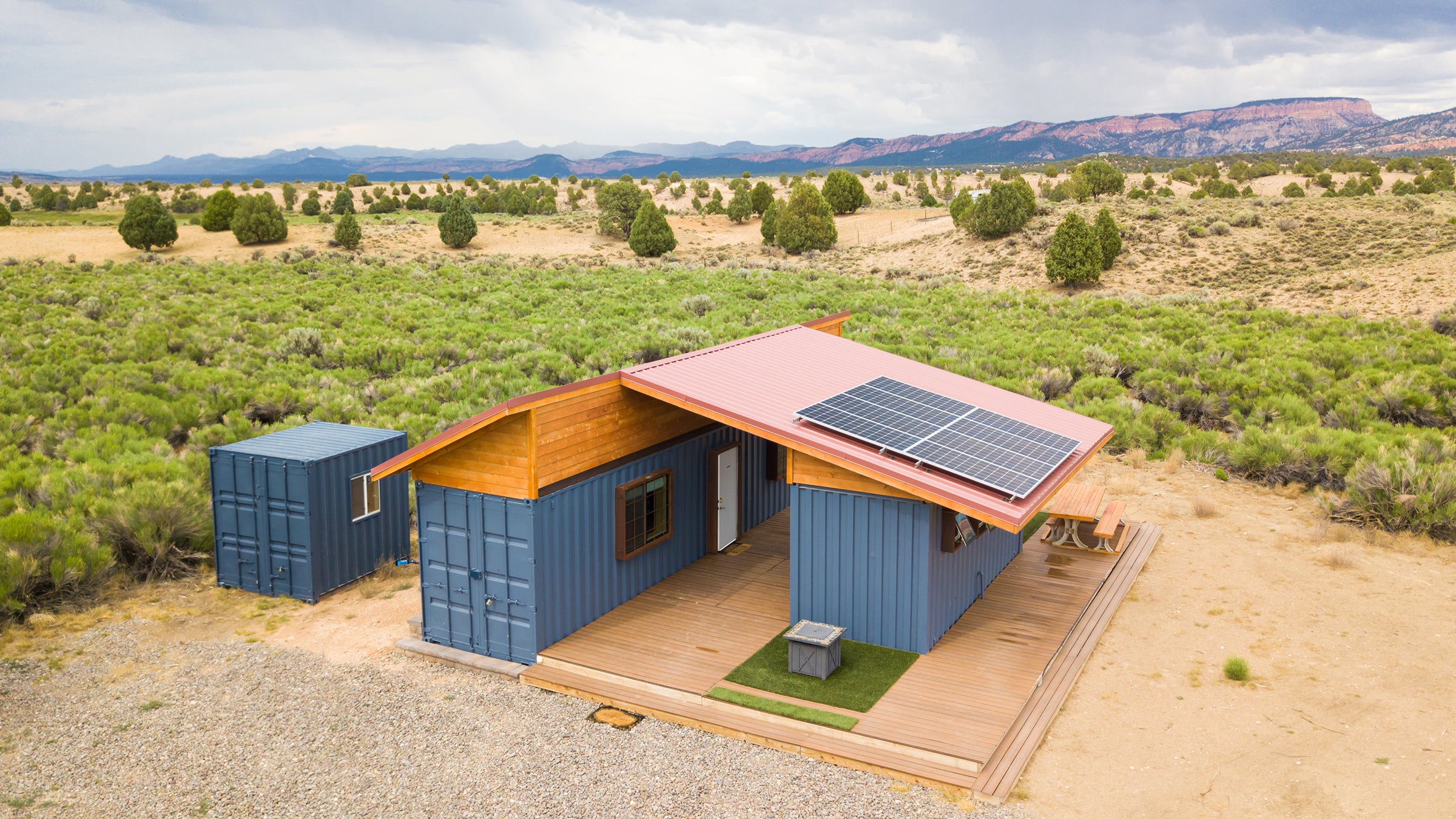
A new mountain-bike hut-to-hut system opened last fall in southern Utah called the��. Five huts are connected along��190 miles of gravel roads and singletrack from Brian Head to Escalante, with about 30 to 40 miles in between each. (You could hike or run the trail as well, but the distance between huts is a bit more suited to those on gravel or mountain bikes.) These��solar-powered units��are built from repurposed shipping containers and sleep up to 12 people. Self-guided packages are available��between July and October (from $889 per person for five nights), or opt for a six-day guided tour with�� starting at $1,800 per person.
Two yurts remain open in the summertime at Idaho’s��, a prime backcountry ski destination that operates six huts during the winter. There’s an extensive mountain-bike trail system from the�� (from $200 a night), which is accessible via a six-mile trail, or you can drive to within a half-mile of the shelter. The 16-person Pioneer Yurt (from $200 a night), reached via a 3.5-mile hike, has��a propane stove, bunk beds with sleeping pads, and a wood-fired sauna, plus access to the area’s tallest summit, 12,009-foot Hyndman Peak.
“Coyote Yurt is more accessible, but you’ll still have a non-mechanized, remote backcountry experience,” says Francie St. Onge, owner of Sun Valley Mountain Huts. Go on your own��or choose a guided, catered trip, where meals include��dishes like��fish tacos or grilled steak with chimichurri sauce. Best of all: it’s not too late to book—there’s still availability here for this summer.
If You Want Full Service
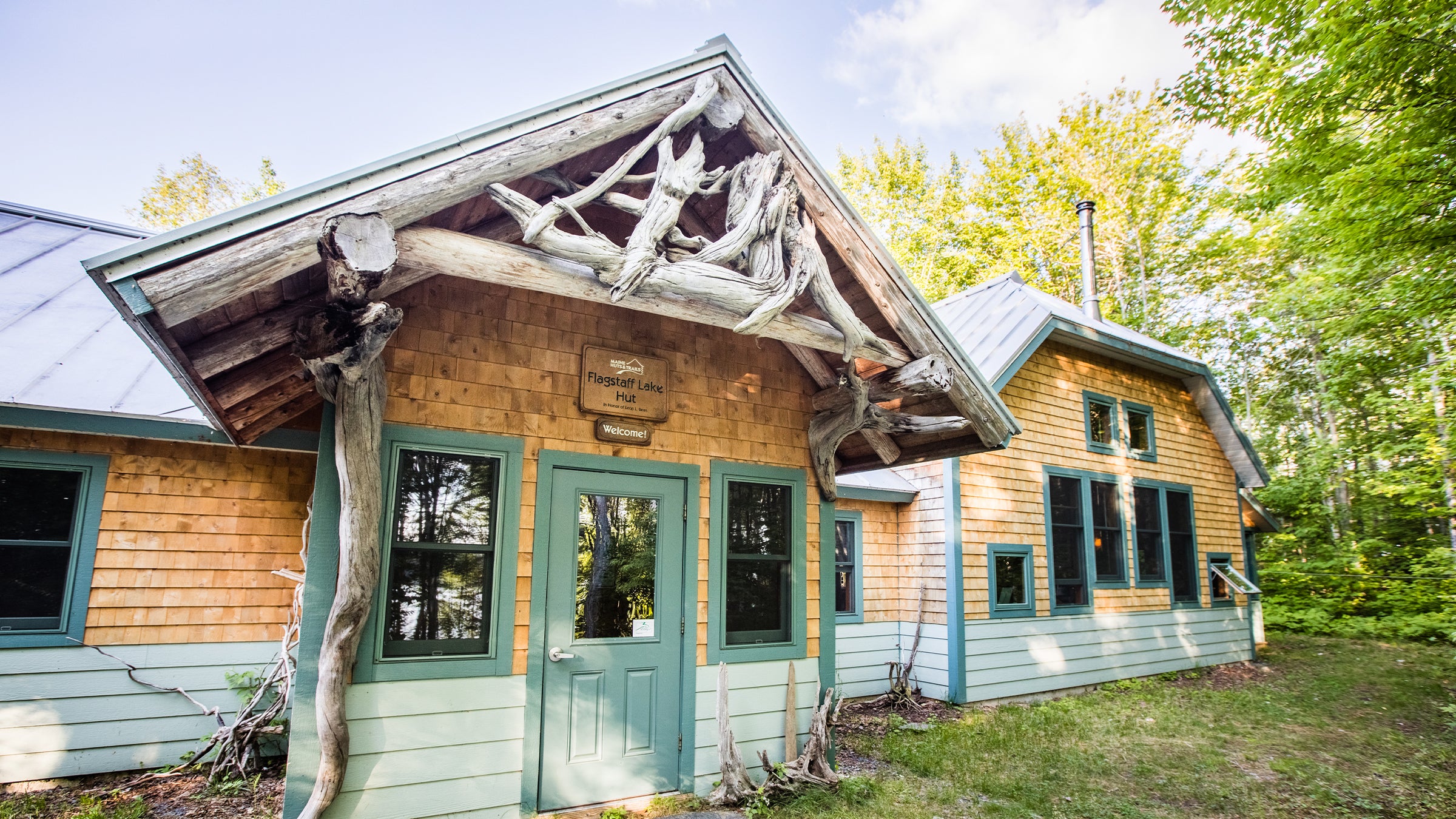
At one point, Montana’s Glacier National Park was home to��nine backcountry lodges, built between 1910 and 1915. Over the years, fires, avalanches, and World War II took their toll, and��all but two of the huts were wiped out. The beloved�� remained, but was destroyed by a wildfire in 2017; however, it was rebuilt and reopened in 2020.
Getting to Sperry Chalet is challenging—it’s��nearly seven��miles, with��almost 3,000 feet of vertical gain—but��it’s worth it.��From the lodge, you’ll be able to explore Sperry Glacier, one of the last remaining glaciers in the park. “I’ve always referred to the Sperry Chalet as the last bastion of hospitality in the wild,” says Courtney Stone, who first visited the chalet when she was ten��and now works for Glacier Guides, a local hiking and rafting company. “When you get there, the staff greets you with lemonade. At dinner, you’re sitting down��at a table with linens and introducing yourself to the people next to you.”
, the other remaining backcountry lodge in Glacier National Park, is the more rustic option—you’ll prepare your own meals in a shared kitchen, but bed linens are available. You’ll get there via a seven-mile hike on the Highline Trail. Both chalets in the park book out quickly (and��months ahead of time), but cancellations do happen.�� offers guided three-day hikes (from $1,390) to both chalets, but all trips for this summer are sold out already, so plan ahead to book for a future year.
On the East Coast,�� normally operates four full-service huts modeled on the European hut system and strung along an 80-mile trail network. This summer, due to COVID-19, only the����will be in operation and is ideal for families or groups, with self-service operations from June to October (from $1,500 for a three-day stay). You’ll still have full access to the area’s extensive hiking and biking trails.��
Or if You’re After,��Essentially, a Hotel in the Backcountry
Want to hike in��but don’t want to rough it while you’re there? Check out the�� (from $132) in Georgia’s . It’s��five miles to this remote, year-round lodge, located just off the Appalachian Trail. Once you’re there, you’ll find 20 guest rooms, hot showers, and home-cooked meals. Rooms for this summer are still available, as of press time.������
Or check into Oregon’s�� (from $225), accessible via an 8.5-mile hike into the vast Eagle Cap Wilderness (some guests arrive by horseback or chartered flight). Dine on farm-to-table fare and sleep��in canvas tents, cabins, or a room in the lodge. By day, you can hike or catch rainbow trout in the Wild and Scenic–designated Minam River, which flows in front of the property. By night, relax at the��full-service bar.
